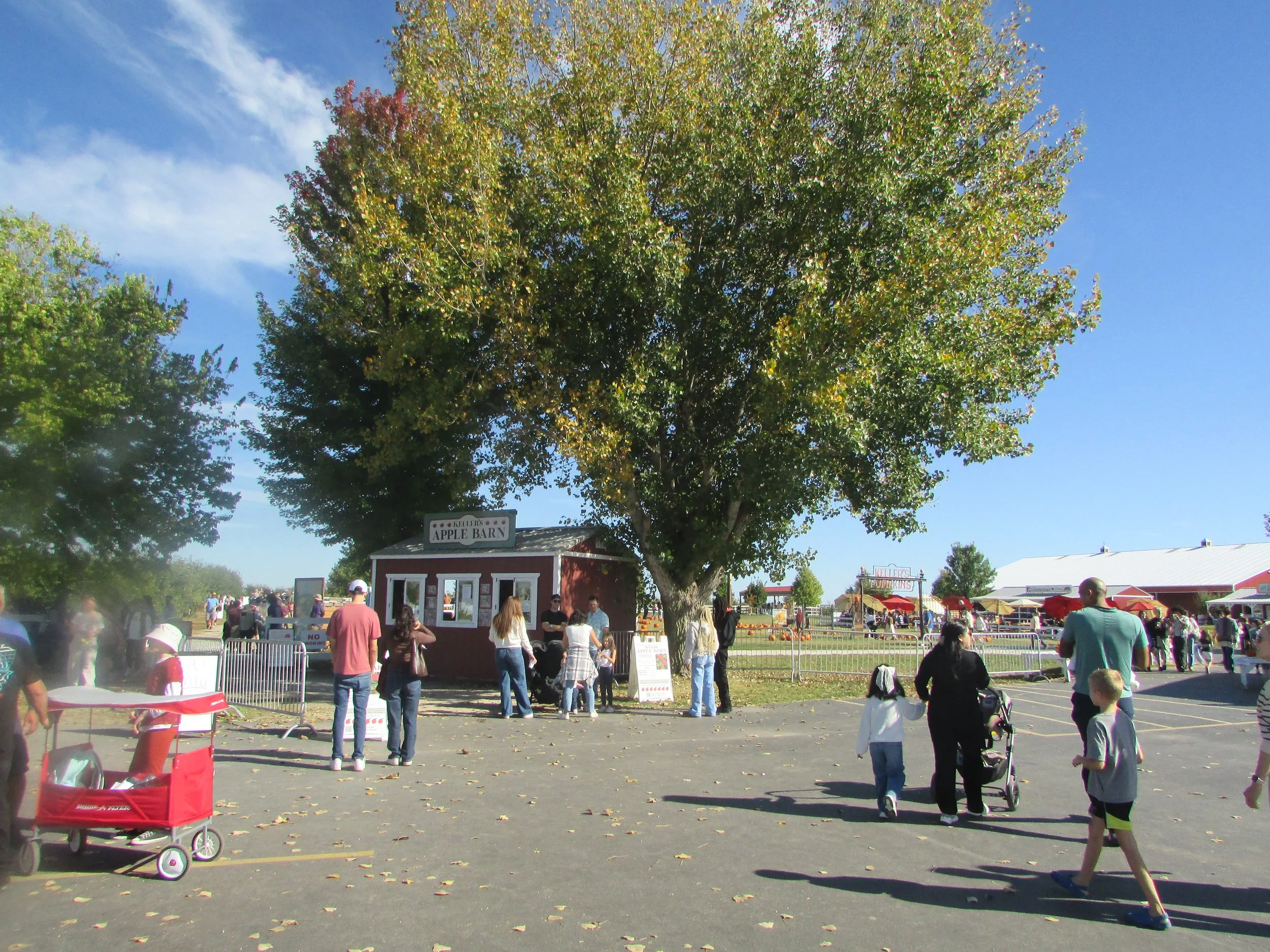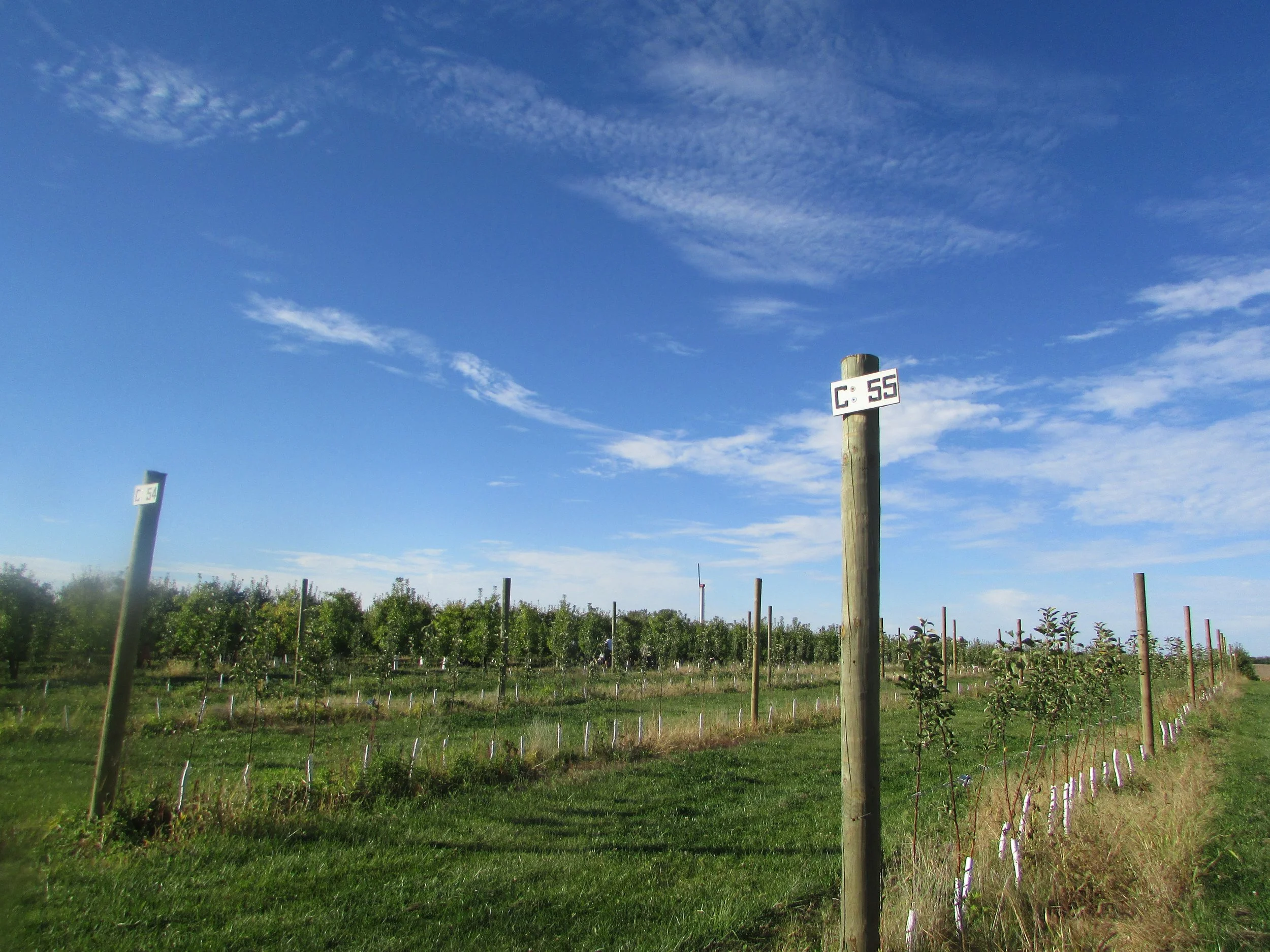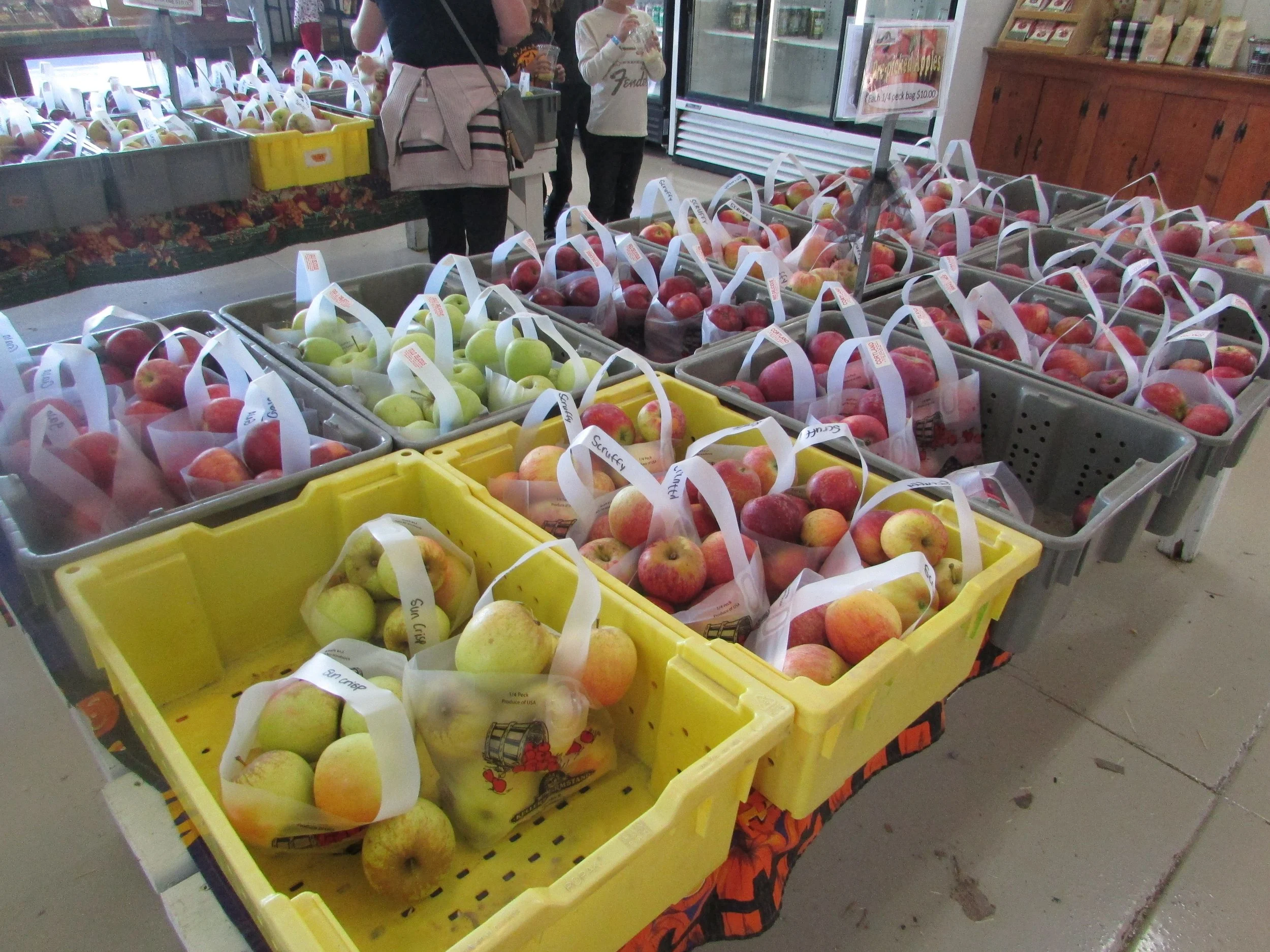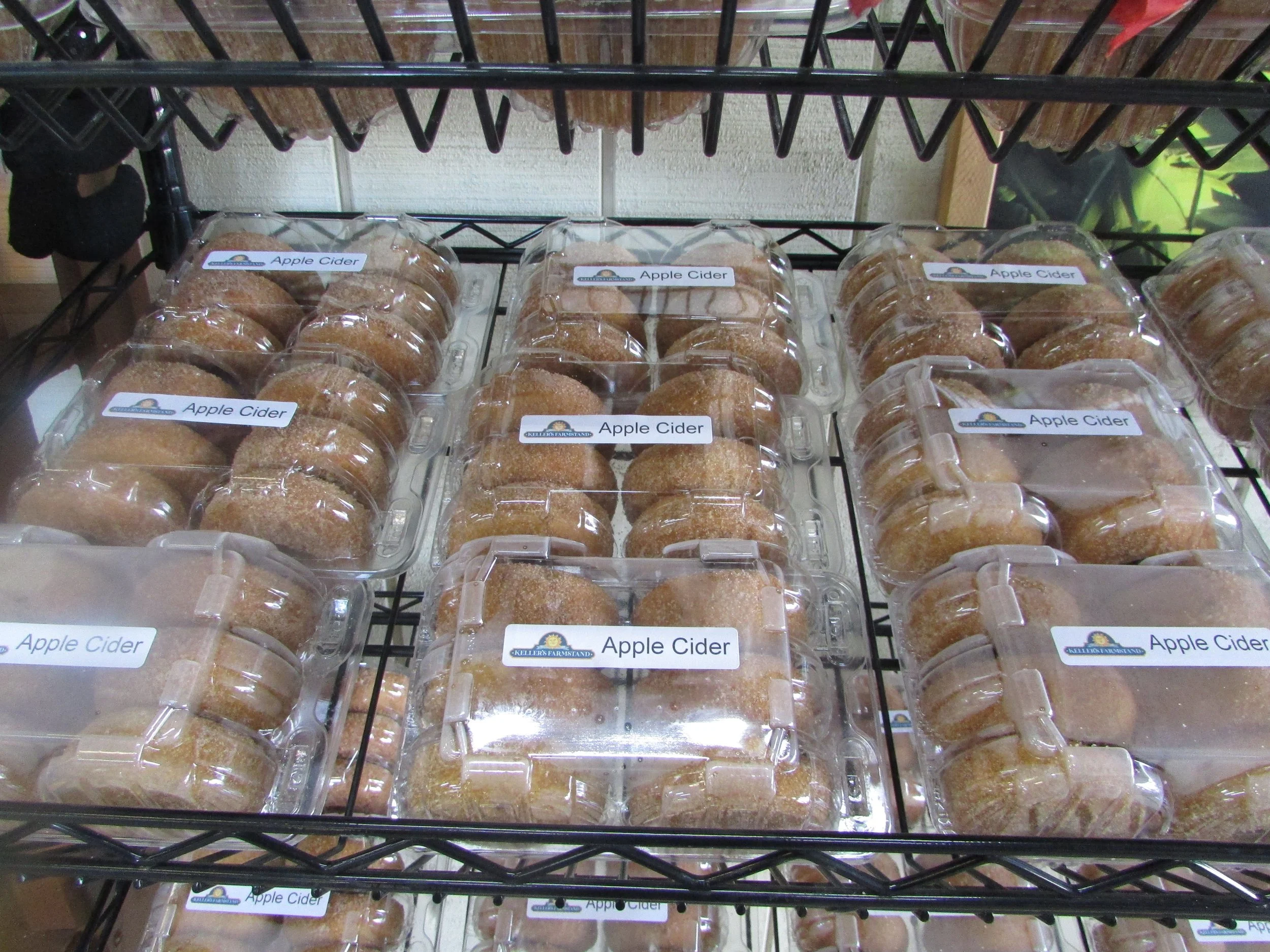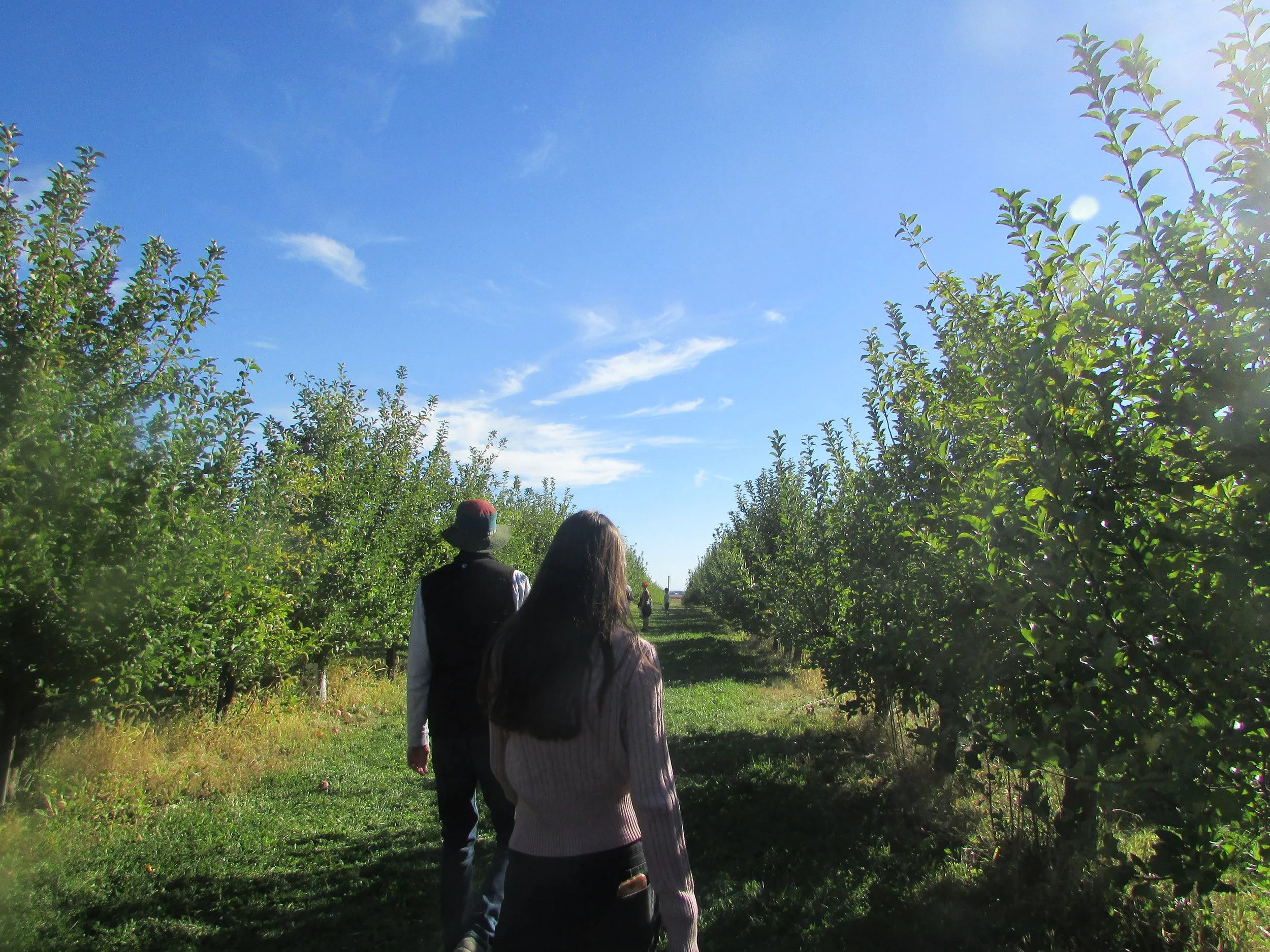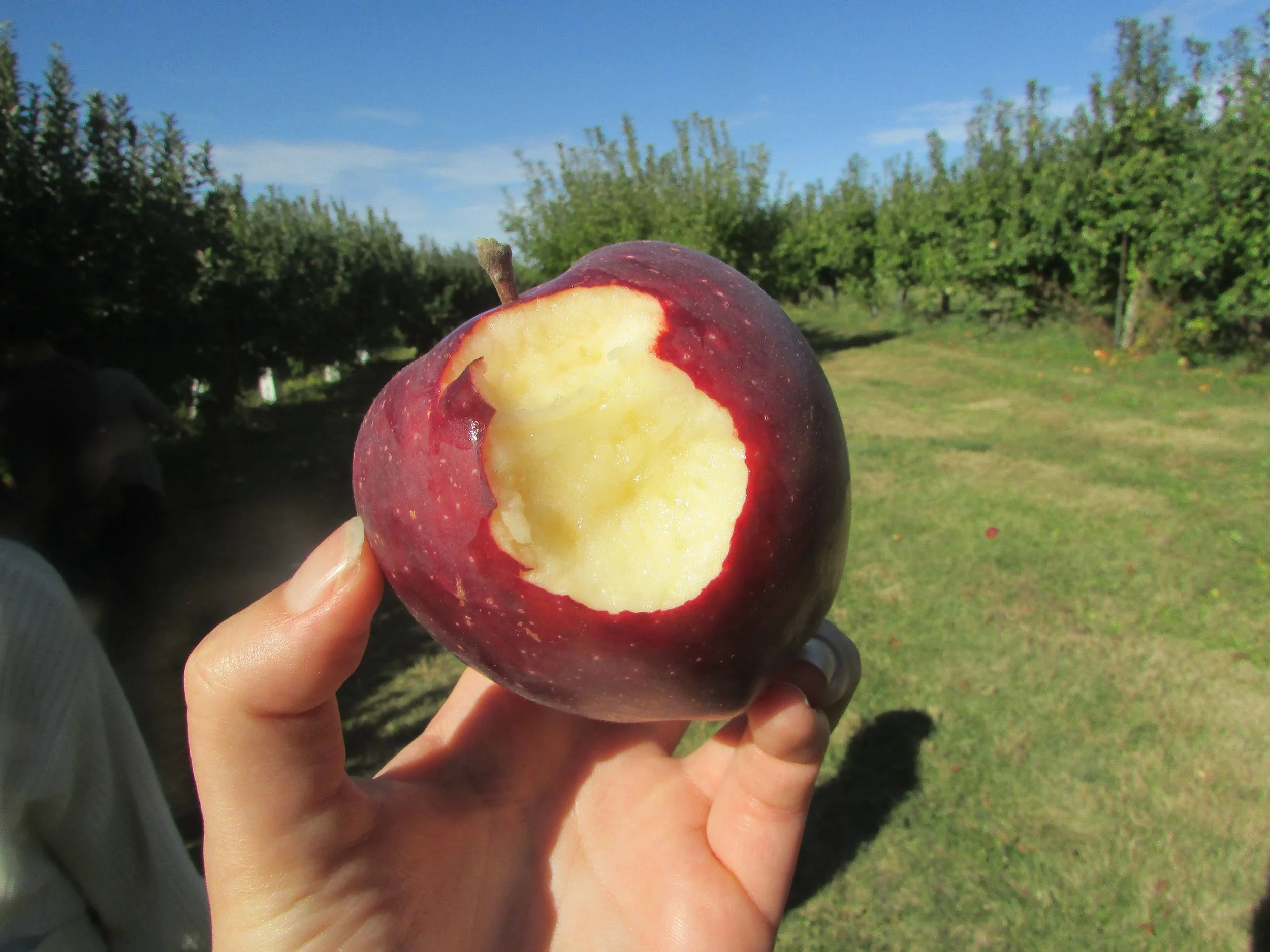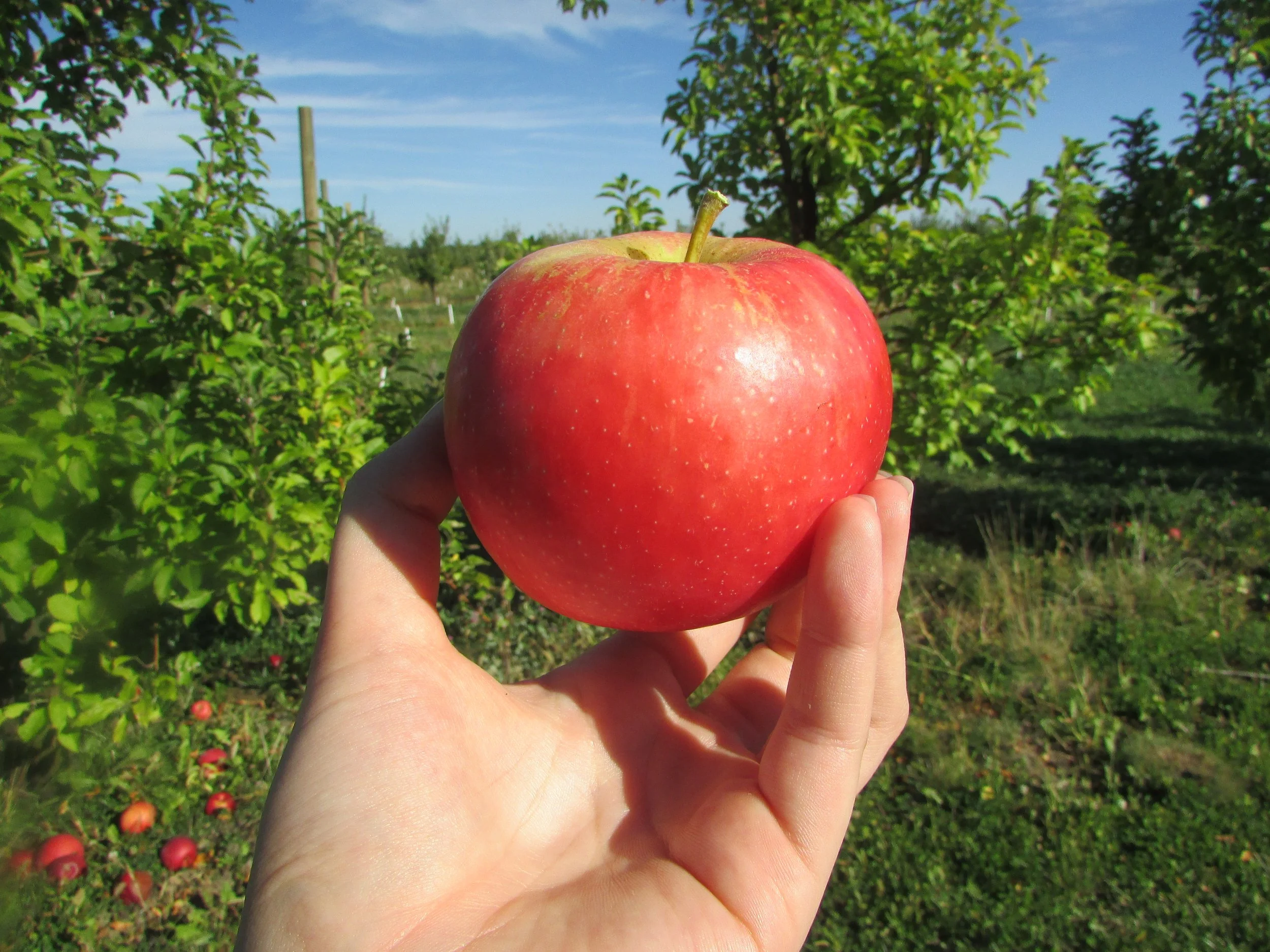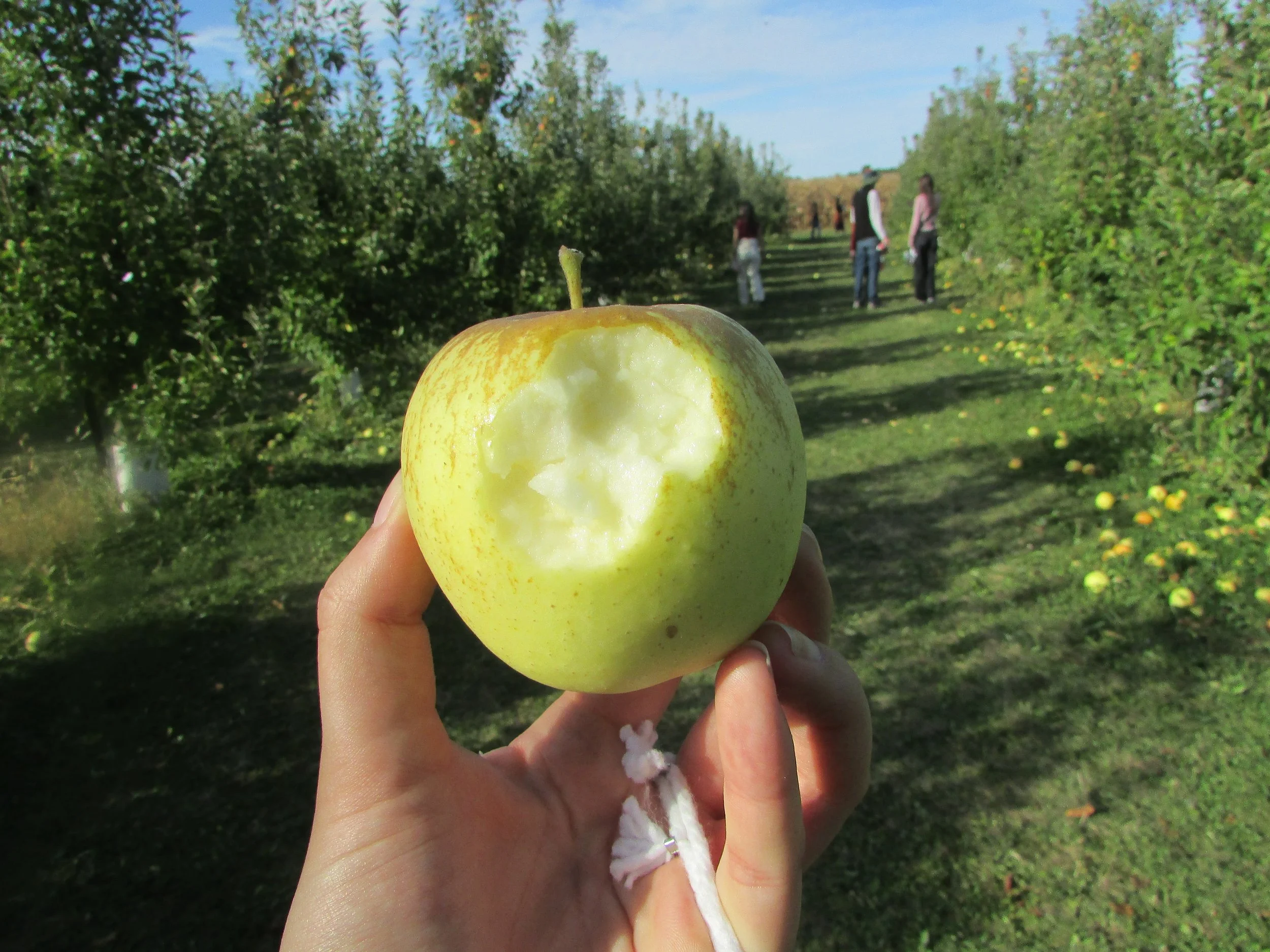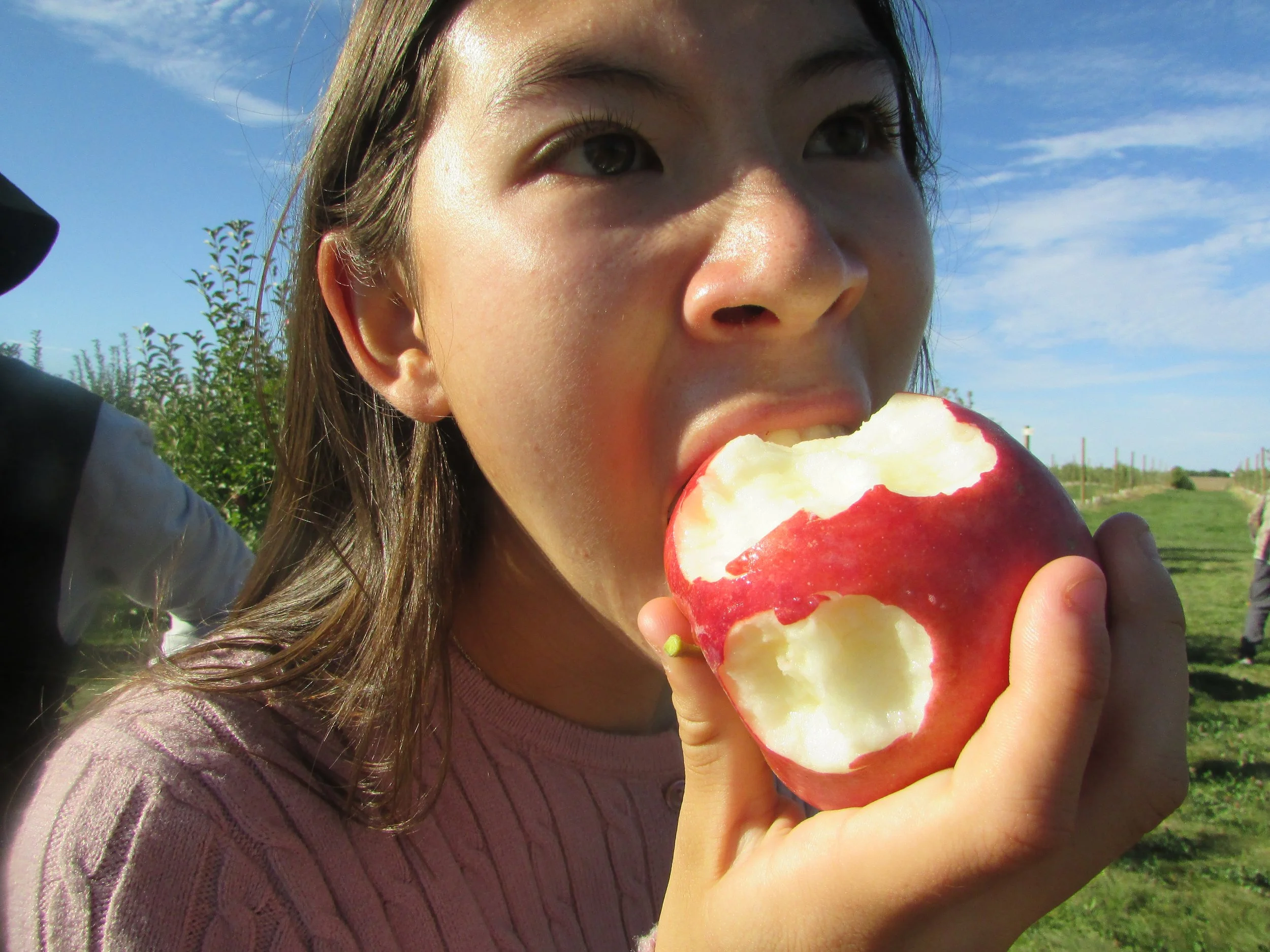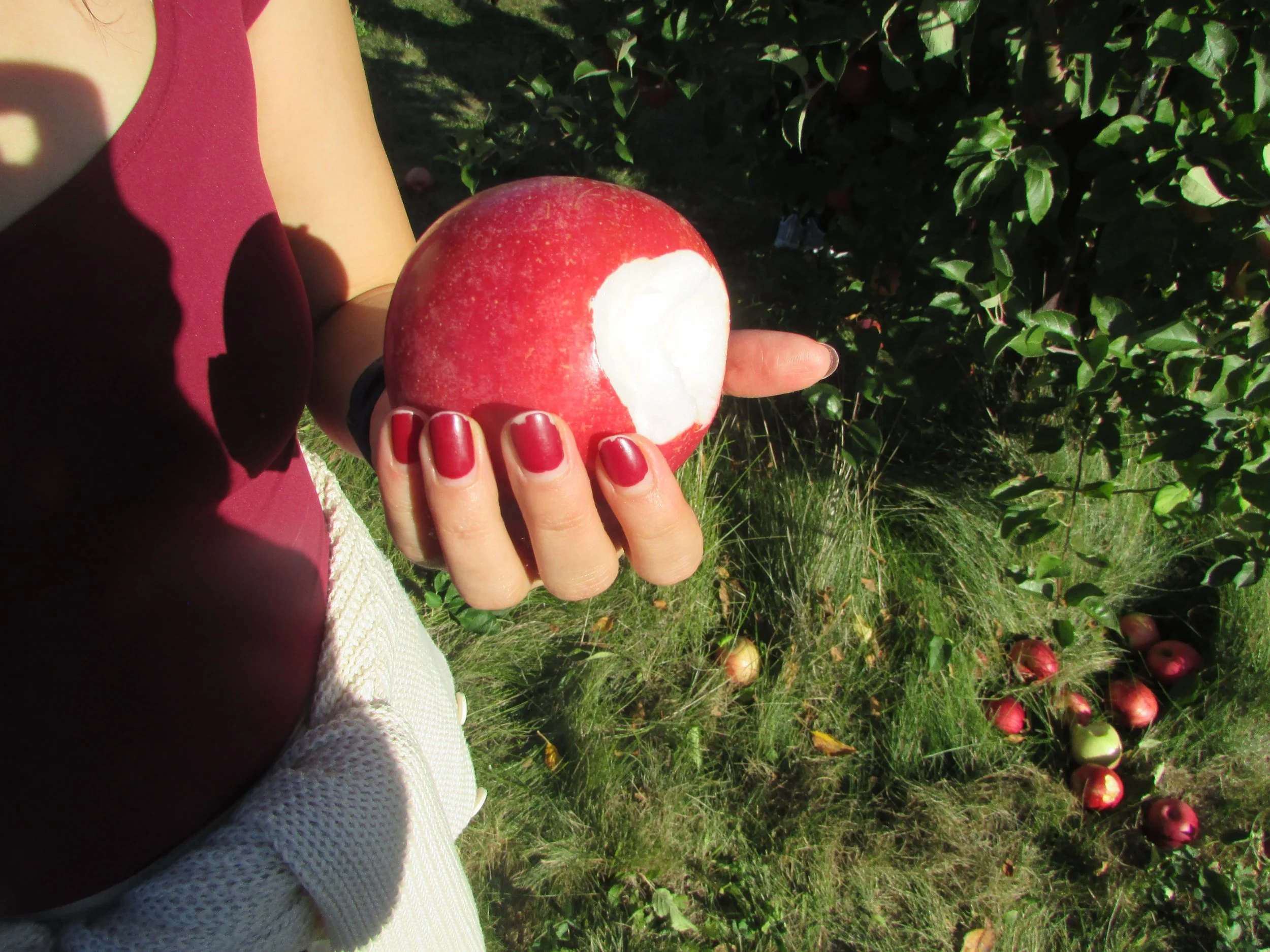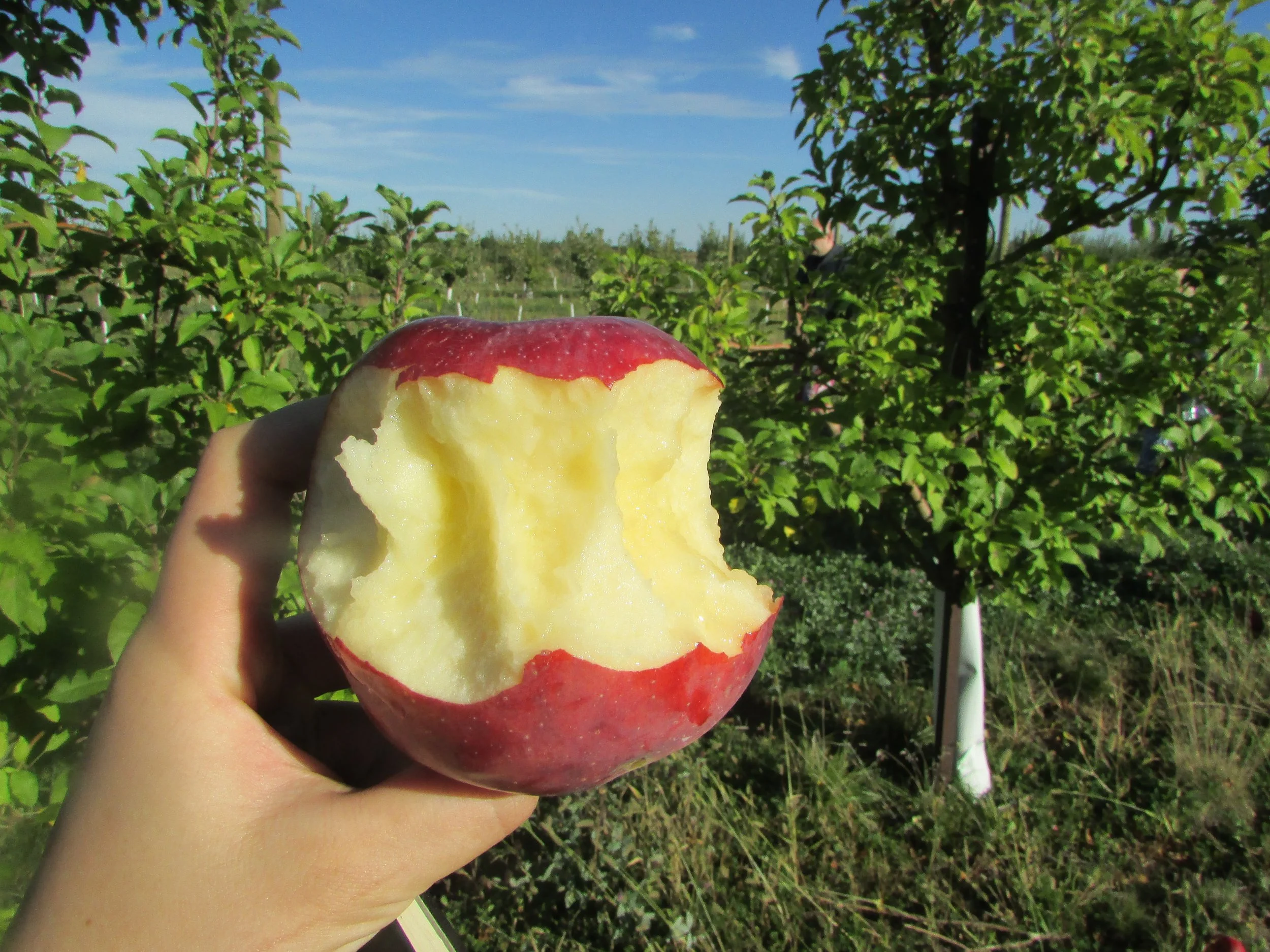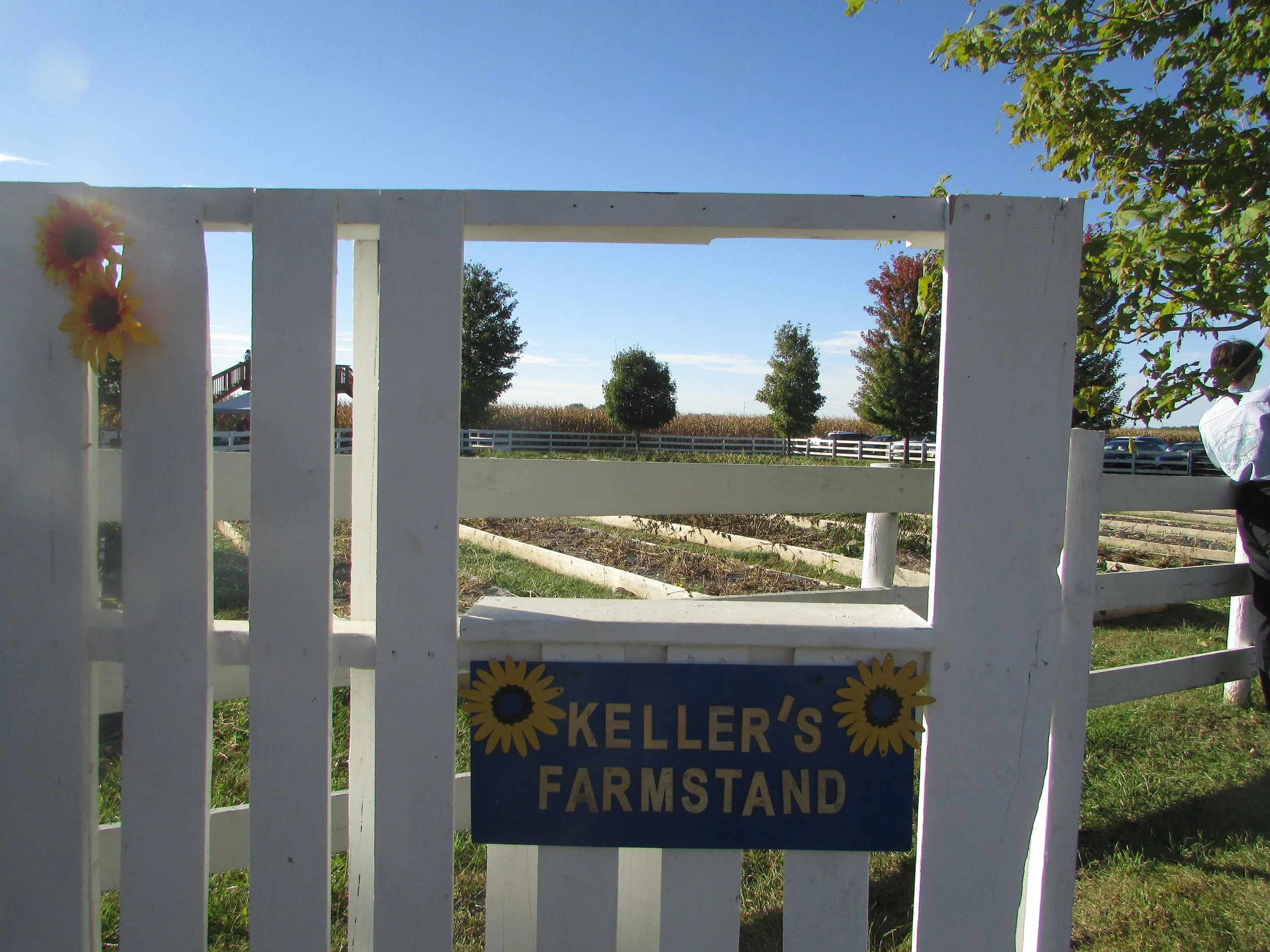Keller's Farmstand Review
Aubrey Barb
Two weeks ago, I wouldn’t have considered myself an apple lover. My childhood instilled in me a deep appreciation for apple pie, Isaac Newton, and Mott’s applesauce, but I’d never considered fresh apples to be anything special. This might have stemmed from having braces and being taught to fear even a bite of a Honeycrisp or Golden Delicious. Long after the braces came off, though, I would rarely spare the apple section a second glance in grocery stores full of globally imported fruits.
It turns out that fresh apples are far from boring—like most fruits, apples have a long, storied past spanning thousands of years and miles. The birthplace of the modern apple is considered Kazakhstan, whose mountainous regions are home to the ancestor species (Malus sieversii) of modern apples (Malus domesticus). By way of the Silk Road, apples made their way to the Roman Empire, where modern cultivation techniques were apparently perfected. European colonists brought apples even further to North America, and Johnny Appleseed’s work planting midwestern apple nurseries laid the foundation for present-day midwestern apple orchards.
Enter: Keller’s Farmstand, an apple orchard established in 2004 in Oswego, Illinois. Midwestern America happens to be a perfect place for growing apples, with states like ours having both rich soil and winter temperatures sufficient to provide the “cold snap” that many apple trees need to properly bloom in the spring. UChicago dorms regularly send busloads of students to Keller’s Farmstand, which is about an hour’s drive from Hyde Park, to partake in ritualistic fall festivities.
The orchard grows 31 different breeds of apples and boasts a wide variety of their downstream products, such as cider, donuts, flavored popcorn, apple chips, and jam. The going rate for the “you-pick” orchard is ¼ peck, or 6-8 apples, for $10. At any given point in the season, only a few of the 31 breeds will be ripe, which is important to note for any scheming apple enthusiast. The schedule is as follows:
Mid August / Early September: Early Gala, Ginger Gold, Premier Honeycrisp, Ruby Mac, Zestar.
Mid September: Ambrosia, Autumn Crisp, Cortland, Crimson Crisp, Fuji, Gala, Golden Supreme, Honeycrisp, Jonathan, Jonaprince, McIntosh, Pixie Crunch, Sweet Sixteen, Triumph.
Late September: Golden Delicious, Red Delicious, Empire, Jonastar.
Early October: Crispin (Mutsu), Idared, Macoun, Rome Beauty, Rosalee, SnowSweet.
Mid October: EverCrisp, Ludacrisp, Pink Lady, Suncrisp.
Pre-picked apples
Apple Cider Donuts
If you take the tractor ride (which is included in an extra “Fall Festivities ticket” along with the pumpkin patch and corn maze), you will learn all about the synthesis of new apple breeds by orchards around the world. Most apple trees are created by a process known as “grafting,” in which a branch from a desired parent tree is connected to a pre-existing root system (this is necessary because an apple’s seeds don’t produce identical trees). Creating a new apple variety involves cross-pollination between parent trees, followed by generations of selecting seed-grown apples for desired traits. The best trees will eventually be grafted, with their descendants growing a completely new line of apples.
All this information about fruit breeding, while interesting, was still not the most shocking part of my experience. Finally entering the orchard, and taking my first bite of a whole apple in perhaps a decade, I discovered it was delicious! A note to readers: the “you-pick” orchard allows unlimited sampling. The ground was littered with half-eaten apples, and the air was thick with the beer-like smell of fermenting fruit. In the time we spent wandering and foraging, I ate so many apples that I went from “keeping the doctor away” to “feeling seriously ill.” I would advise others to moderate their apple consumption, and avoid making the same mistake.
Walking through the orchard
Fructose overload aside, Keller’s Farmstand promises delightful flavors and, weather permitting, good atmosphere. I left with a newfound affection for the mild-mannered apple (which is good because I had a whole bag of them). Below, I’ve transcribed my handwritten notes about each available apple breed, mostly legible despite several apple flesh stains. Note that many breeds were mostly picked over, so subpar sampling might have resulted in a biased review. I encourage everyone to try each breed for themselves!
Red Delicious
Texture: Slightly mealy, but overall pretty crisp.
Flavor: Fresh & classic flavor, crucially not too sweet.
Overall: A handsome, well-sized apple with a perfect fall flavor–a whole new look at Red Delicious compared to the mid-grade apples I had previously tasted. This ended up being one of our favorites!
Red Delicious
Pear Apple
Texture: Firm and dry.
Flavor: Mild flavor, somewhat tart.
Overall: Not an especially memorable apple, except for being confusing–this apple wasn’t especially similar to a pear in anything except color.
Pear Apple
Rome
Texture: Moist and crisp.
Taste: Sweet, bright, and pleasant–like a less in-your-face Honeycrisp.
Overall: An overall very nice apple, with high potential both for eating fresh and baking. No complaints here.
Rome
Suncrisp
Texture: Very fresh and crisp.
Taste: Extremely sour!
Overall: An apple described as tasting like “pink lemonade,” it’s very tart and probably best suited for baked goods. The best part about it was its crisp texture.
Suncrisp
Ludacrisp
Texture: As expected, crisp.
Taste: A more tempered tartness, an improvement from the Suncrisp.
Overall: A pleasantly sour apple, perfect for those not so fond of a super-sweet apple. Once again, good for both eating fresh and baking.
Ludacrisp
Ida Red
Texture: Somewhat dry and mealy.
Taste: Good mixed flavor.
Overall: A solid apple, although not one of my favorites. I found the texture not as crisp as some of the other varieties, and the flavor was pretty average.
Ida Red
Empire
Texture: Crisp (and quite large in size).
Taste: Bright, slightly tart.
Overall: The last apple, but definitely not the least! An unexpected find in a far-off row of the orchard, this apple hit all the marks and is good both for eating fresh and for baking.
Empire
Cider Donuts
We finished off the afternoon with a half-dozen cider donuts. They were small, as cider donuts usually are, but otherwise I had no complaints. The dough was nicely cooked, with a moist, substantial crumb and strong apple flavor. The sugar coating was a (messy) bonus, and the donuts were even better the next day.
Cider Donuts
Until next year!

